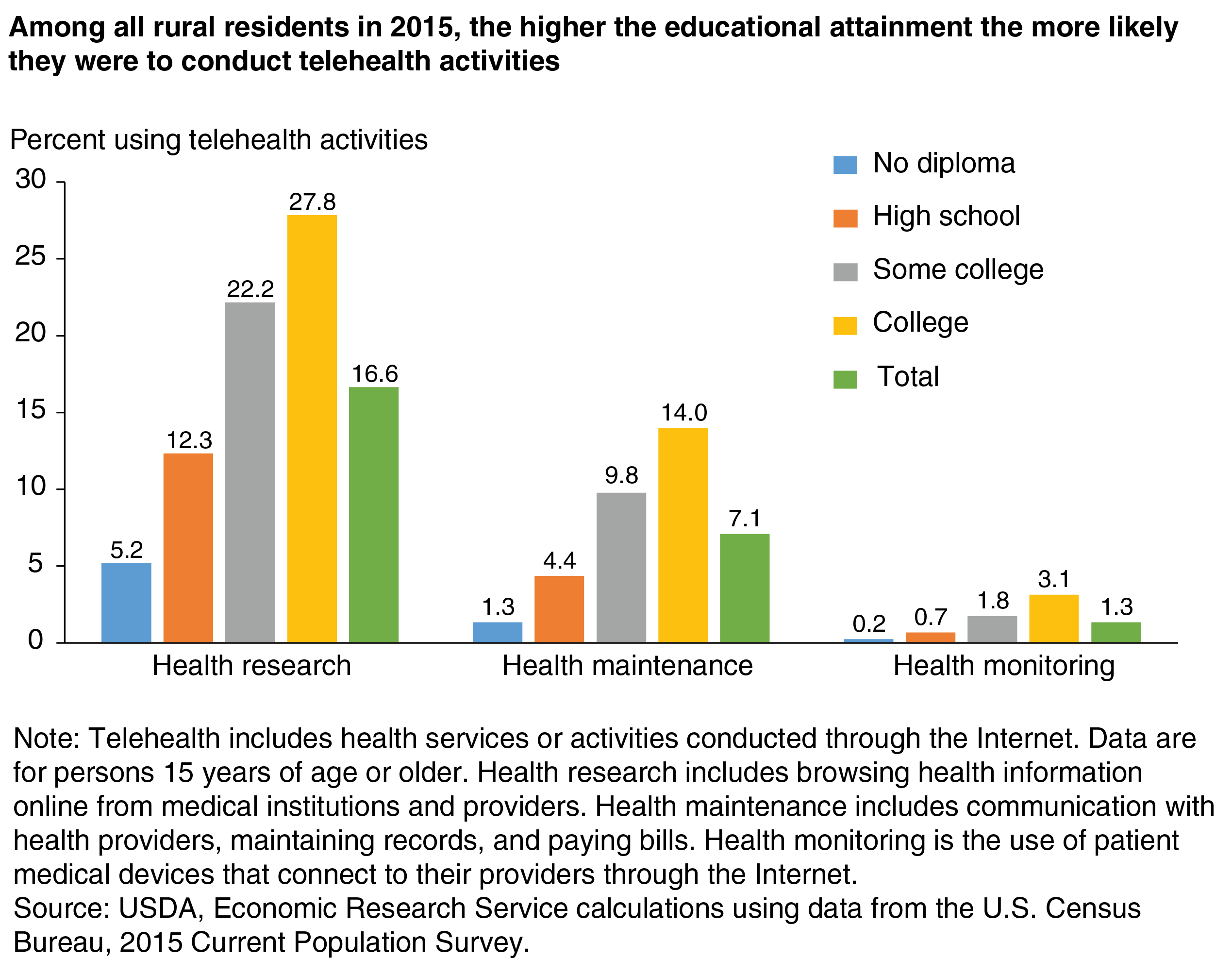
Educational Attainment a Key Factor in Rural Patient Uptake of Telehealth Activities
- by Peter L. Stenberg
- 11/5/2018
Compared with traditional medical delivery systems, telehealth—health services or activities conducted through the Internet—allows people to actively participate in their health care and also facilitates more timely and convenient monitoring of ongoing conditions. These benefits may be greater in rural areas, where remoteness and provider shortages may make accessing health care more difficult for rural residents. Despite the potential benefits telehealth holds for rural communities, little is known about factors affecting telehealth use.
To better understand these factors, ERS examined three different telehealth activities: online health research, online health maintenance, and online health monitoring. Performing health research has become increasingly easy as access to the Internet from home has improved. Many online sources of health information exist, including those from leading medical research institutions such as the Mayo Clinic and Johns Hopkins Medicine. Online health maintenance activities include accessing and maintaining records, paying medical bills, or communicating with health providers online. Online health monitoring entails use of an Internet-connected health monitoring device to exchange data remotely with medical personnel. These medical devices range from automated medical alert devices, such as fall detection for the elderly, to implants that communicate wirelessly for constant monitoring of medical issues, such as heart problems.
ERS examined a number of socioeconomic factors—such as family income, educational attainment, age, and employment type and status—that may affect a person’s choice to participate in telehealth activities. Findings show that educational attainment is strongly associated with telehealth activity. Participation rates in 2015 for each telehealth activity increased with each successively higher level of educational attainment. For example, rural people with college degrees were over 50 percent more likely than the rural average to conduct online health research and were over 100 percent more likely than the rural average to participate in the other two telehealth activities.
This article is drawn from:
- Stenberg, P.L. (2018). Rural Individuals' Telehealth Practices: An Overview. U.S. Department of Agriculture, Economic Research Service. EIB-199.


